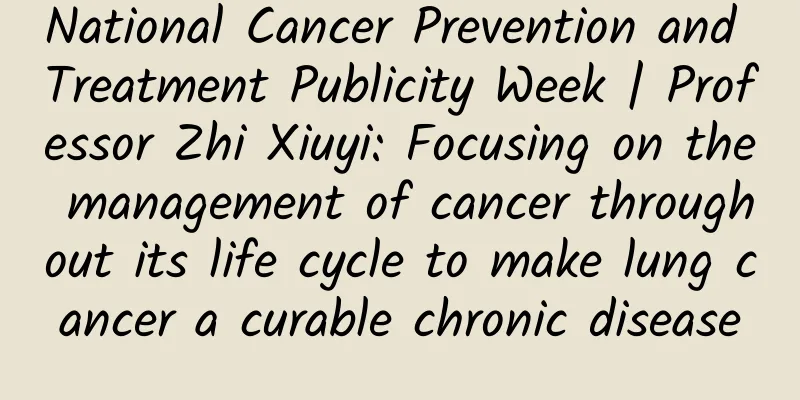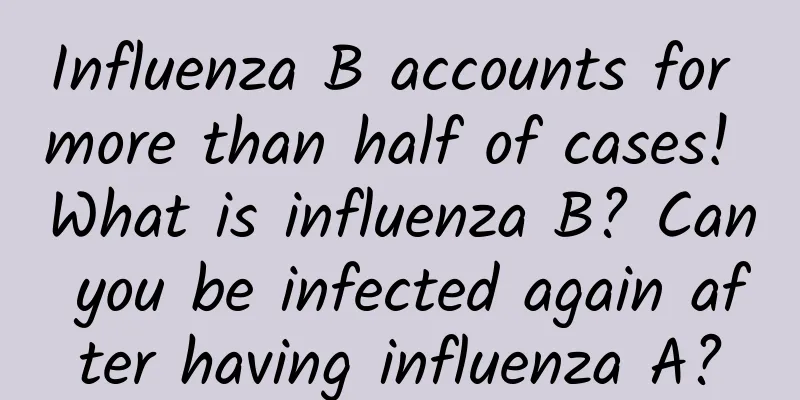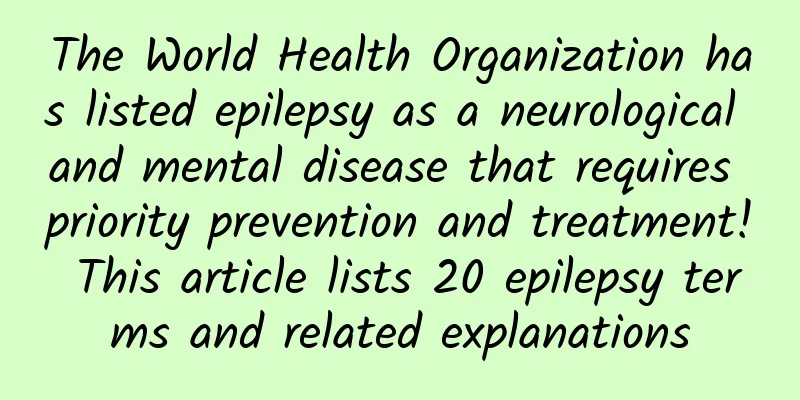National Cancer Prevention and Treatment Publicity Week | Professor Zhi Xiuyi: Focusing on the management of cancer throughout its life cycle to make lung cancer a curable chronic disease

|
Professor Zhi Xiuyi, Department of Thoracic Surgery, Xuanwu Hospital, Capital Medical University According to the latest global malignant tumor epidemiological information provided by the World Health Organization, the number of patients diagnosed with lung cancer in my country in 2020 has exceeded 800,000, and the number of patients who died from lung cancer has exceeded 700,000. Recently, the 2016 Chinese malignant tumor epidemic data published by the Chinese Journal of Oncology also showed that lung cancer still ranks first in the number of malignant tumors in my country, with approximately 828,100 new cases. At present, lung cancer, as a common, frequently occurring, elderly, and chronic disease, has "swaggered" into our lives. However, with the emergence of immunotherapy and targeted therapy, the pattern of lung cancer treatment has changed significantly, the survival time of patients has been greatly improved, and the quality of life has also been improved, making it possible for lung cancer to be managed as a chronic disease. New diagnostic and treatment technologies + new treatment drugs are the key to defining lung cancer as a chronic disease The concept of chronic disease is relative to acute infectious diseases or acute states of diseases. It is a long-term disease state, manifested as gradual or progressive organ function decline. Lung cancer, as a major chronic disease defined in my country, has been incorporated into the public health management system and major chronic disease management system. Early lung cancer usually refers to lung cancer in stage I according to the international TNM staging standard. Since early lung cancer does not metastasize to peripheral lymph nodes and distant organs, and the clinical symptoms are not obvious, many patients are often diagnosed with local mid-late or late stage lung cancer, and the best time for radical surgical treatment is lost. Through decades of popular science publicity on lung cancer prevention and treatment, the public's attention and participation in health examinations, lung cancer screening, and early diagnosis and treatment have been greatly improved. Chest low-dose spiral CT projects and blood tumor markers have been increasingly widely included in health examinations, which has increased the detection rate of lung nodules and early lung cancer, making the five-year survival rate of early lung cancer after minimally invasive surgery close to 100%, and the ten-year survival rate is above 90%. The saying that "once lung cancer is diagnosed, 80% is local mid-late or late stage" no longer exists, which is also an important factor in defining lung cancer as a chronic disease. In the past 20 years, with the development and clinical use of new anti-lung cancer drugs, the continuous upgrading of chemotherapy drugs, and the gradual application of adjuvant drugs for toxic and side effects caused by cytotoxic chemotherapy and radiotherapy, the quality of life of patients with advanced lung cancer receiving chemotherapy has been greatly improved, and the compliance and survival time of patients have been improved. In particular, in the past 10 years, more and more molecular targeted drugs have been developed and launched. In addition to common mutations such as EGFR and ALK, the treatment drug options for rare target mutations of lung cancer such as MET, BRAF, NTRK, RET and EGFR exon 20 insertion mutations are becoming increasingly abundant. Through genetic testing, lung cancer patients with corresponding target mutations can use molecular targeted therapeutic drugs, making it possible for more patients with locally advanced and advanced lung cancer to achieve a 5-year survival rate. In the past five years, immunotherapy drugs have been applied to the multidisciplinary comprehensive treatment system and model for patients with locally advanced and advanced lung cancer. Clinical treatment plans have gradually become more precise and diversified, allowing many patients with advanced lung cancer to have longer survival and better quality of life. The whole process management model of lung cancer in the perioperative period includes preoperative neoadjuvant chemotherapy, preoperative neoadjuvant chemotherapy plus immunotherapy, preoperative neoadjuvant targeted therapy, postoperative adjuvant chemotherapy plus immunotherapy, and postoperative adjuvant targeted therapy, which has greatly improved the five-year survival rate and long-term survival rate of patients with locally advanced lung cancer who can be treated with surgery, and is the key to defining lung cancer as a chronic disease. Strengthen scientific publicity, speak frankly about lung cancer, and treat lung cancer scientifically The Healthy China Action Plan (2019-2030) proposes that by 2022 and 2030, the overall five-year cancer survival rate will be no less than 43.3% and 46.6%, respectively. To achieve this goal, lung cancer, as the malignant tumor with the highest incidence and mortality rate in my country, needs to be paid special attention to. At the same time, early detection and precise treatment are also the key to truly improve the five-year survival rate of lung cancer and achieve survival with cancer. First, we should strengthen the popularization of new technologies and new drugs for lung cancer diagnosis and treatment. Through the popularization of targeted drugs and immunotherapy drugs that can significantly improve the treatment effect of advanced lung cancer, multidisciplinary comprehensive treatment mode of lung cancer and individualized precision treatment, it will help to improve the public's awareness of lung cancer prevention and treatment and the importance of early diagnosis and treatment of lung cancer, and understand the new technologies and new drugs newly developed in the field of lung cancer diagnosis and treatment, so that doctors and patients can stand together and more lung cancer patients and their families can truly speak frankly about cancer and treat lung cancer in a scientific and standardized manner. Secondly, we also hope that more health administrative departments, medical institutions and grassroots medical personnel will understand and master the new progress in lung cancer diagnosis and treatment technologies and drug treatments, new norms and new guidelines for lung cancer diagnosis and treatment, and achieve clinical cure as much as possible and improve the quality of life of patients. Overall, new technologies for lung cancer diagnosis and treatment are developing rapidly, and the treatment effect of lung cancer is also improving rapidly. We hope that through the publicity of mainstream media, more people will understand the latest developed and marketed targeted drugs and their treatment effects, the latest developed minimally invasive treatment methods and technologies (including thoracoscopic minimally invasive surgery, robotic minimally invasive surgery system, CT-guided radiofrequency ablation and microwave ablation technology, etc.). Finally, I hope that the medical insurance department will quickly include new drugs and technologies that are clearly effective in clinical treatment and expensive into the medical insurance reimbursement catalog through negotiation mechanisms and price reductions, so that more lung cancer patients in remote areas, underdeveloped areas and low-income groups can use new drugs and technologies, thereby further curbing the phenomenon of poverty caused by illness and poverty caused by illness. At the same time, by applying these new technologies, new methods and new drugs, clinicians can enable more patients with advanced lung cancer to survive longer, have a better quality of life and more clinical benefits. Lung cancer is actually a preventable disease. Through these measures, more people can talk about lung cancer openly and treat lung cancer scientifically. By improving the society's scientific understanding of the new progress in the diagnosis and treatment of lung cancer, the society can truly recognize that lung cancer is a chronic disease that can be managed with the concept of chronic diseases, and create an atmosphere of public opinion, family atmosphere and social atmosphere that lung cancer is a major chronic disease and a lifestyle disease. -summary- April 15-21 every year is the National Cancer Prevention and Treatment Publicity Week. As the cancer with the highest incidence and mortality rate in the world, lung cancer is expected to attract attention from the whole society to early diagnosis and treatment of lung cancer, understand the standardized diagnosis and treatment of lung cancer, and actively participate in the prevention, screening, diagnosis, treatment and rehabilitation of lung cancer. At the same time, facing the reality that lung cancer is expected to become a disease that will coexist with patients for a long time, we call on the whole society not to discriminate against lung cancer patients. Whether in the workplace, family life, or various social activities, we must pay attention to the psychological care and love for lung cancer patients, so that lung cancer patients can play their original social roles normally, work together to build a harmonious doctor-patient relationship, and help implement the "Healthy China" strategy. Popular Science Tips Although most lung nodules are benign, lung cancer is difficult to detect in the early stages because there are no obvious symptoms. Therefore, high-risk groups should still pay attention to early screening. Which groups of people are at high risk of lung cancer? 1. People aged 50 and above; 2. People who smoke more than 1 pack a day and have smoked for more than 20 years; 3. People with a family history of lung cancer; 4. People with a history of lung diseases, such as tuberculosis, chronic obstructive pulmonary disease, and other chronic lung inflammations; 5. People who work or live for a long time in areas with a high incidence of lung cancer, such as petroleum, cement, chemicals, coal, heavy metals, etc. |
<<: The Sherlock Holmes of Oncology: Genetic Testing
Recommend
Can I jump rope frequently during menstruation?
Menstruation is a compulsory course in every girl...
What to do if the anterior and posterior wall bulges after childbirth
In fact, natural childbirth is a method of delive...
What does atypical endometrial hyperplasia mean?
There are three main reasons for the occurrence o...
This disease with a mortality rate of nearly 100% is hidden around you and me, but many people don’t know it.
Today is rabies day, let’s talk about it seriousl...
What should I do if my menstruation is irregular after painless abortion?
In modern society, people have a richer and riche...
Which department should I go to for caesarean section review?
Women generally need to undergo a postpartum chec...
World Milk Day丨Dietary Guidelines "update" milk intake, these 6 types of people should drink more milk!
Milk is a common drink in our daily life. It is n...
The difference between hidden abortion and menstruation
Menstruation is a cycle of the female physiologic...
Why do pregnant women always get angry?
If a pregnant woman always gets angry, it means t...
How to tell if a man is single? What are the signs of a man with a family?
In this impetuous world, many people like to pret...
What to do if your finger joints hurt during pregnancy
Various physical conditions of pregnant women dur...
Unconsciously diagnosed with diabetes? You need to know these early symptoms!
Diabetes is a relatively common disease. There ar...
EyeTrackShop: A study on eye movement heat maps of profile pages on foreign social networking sites
EyeTrackShop recently released an analysis report...
What are the disadvantages of obesity in women
Nowadays, apart from work and wealth, the thing p...
What is the cause of a small amount of bleeding at 12 weeks of pregnancy?
Many pregnant women will experience a small amoun...









